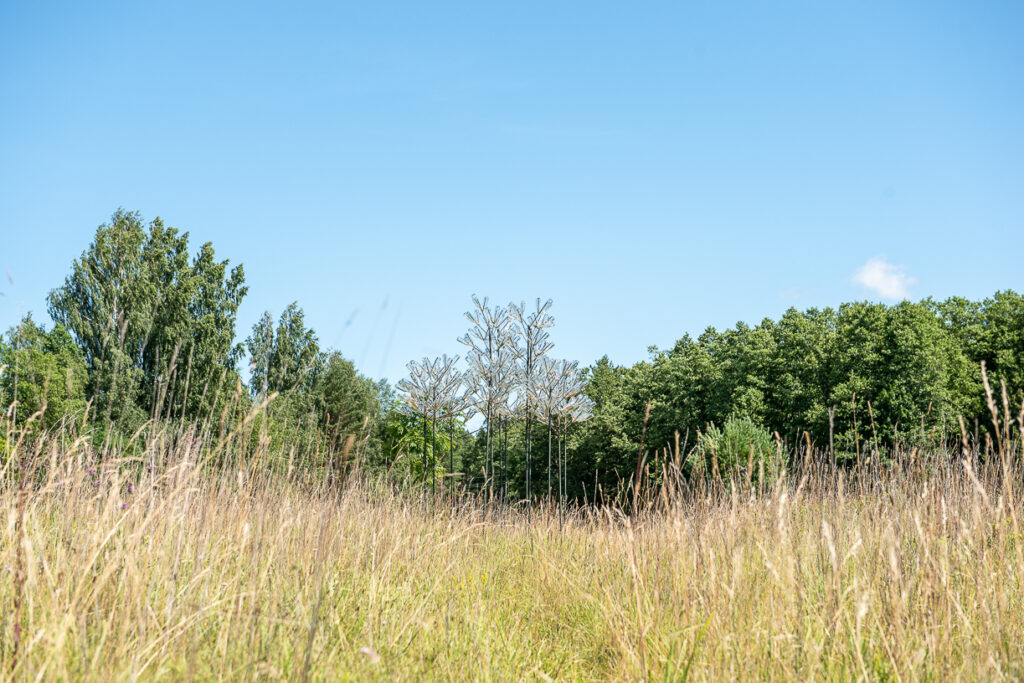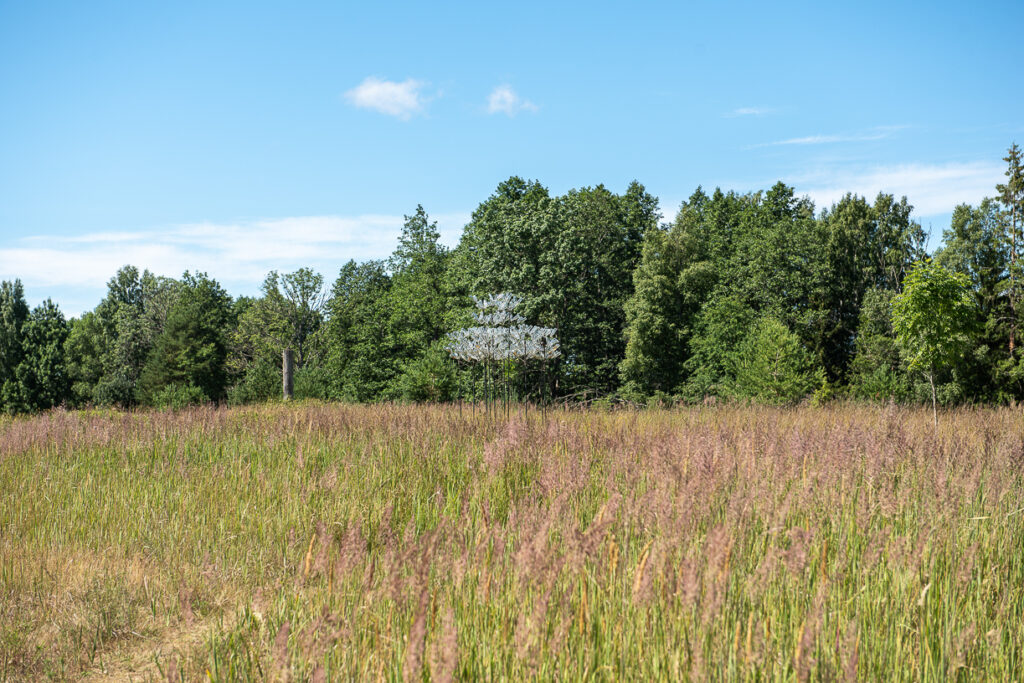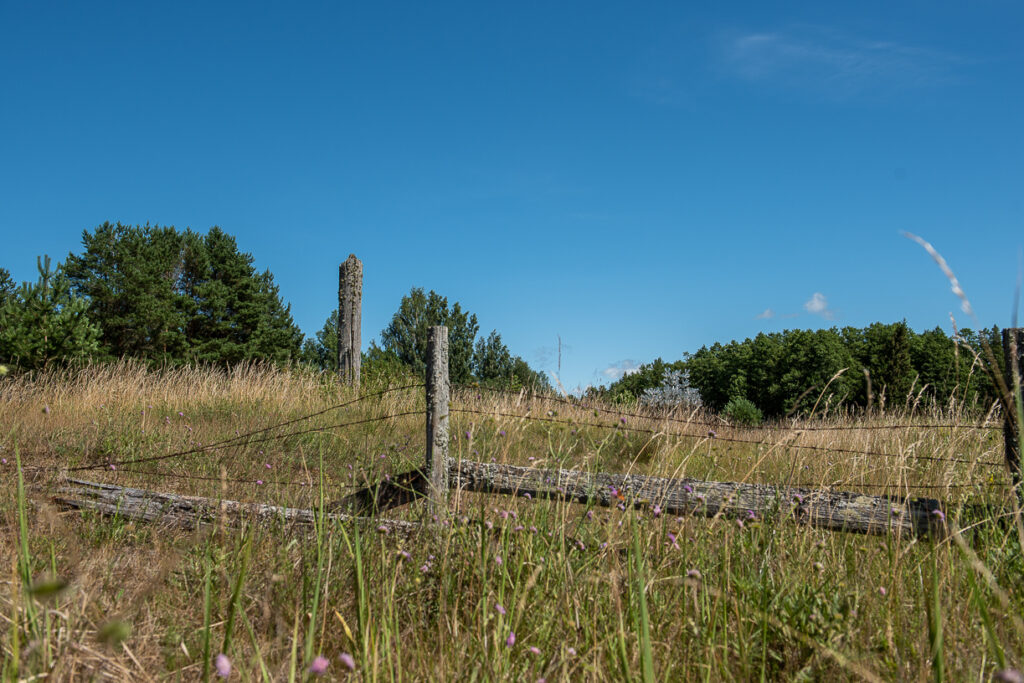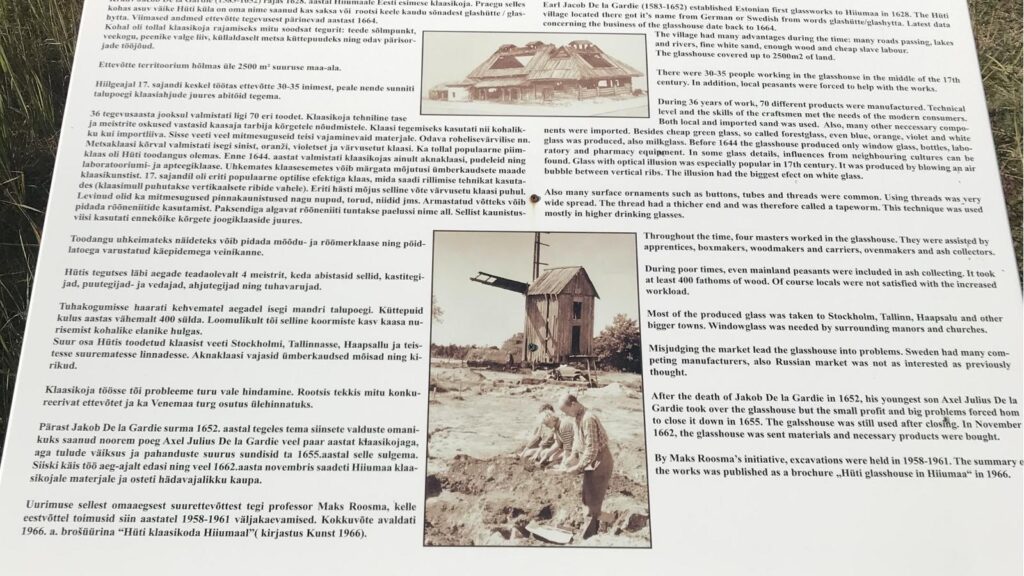Hüti Glassworks

Earl Jacob De la Gardie (1583-1652) established Estonian first glassworks to Hiiumaa in 1628. The Hüti village located there got it’s name from German or Swedish from words glashütte/glashytta. Latest data concerning the business of the glasshouse date back to 1664.
The village had many advantages during the time: many roads passing, lakes and rivers, fine white sand, enough wood and cheap slave labour.
The glasshouse covered up to 2500m2 of land.
There were 30-35 people working in the glasshouse in the middle of the 17th century. In addition, local peasants were forced to help with the works.
During 36 years of work, 70 different products were manufactured. Technical level and the skills of the craftsmen met the needs of the modern consumers. Both local and imported sand was used. Also, many other necessary components were imported. Besides cheap green glass, so called forestglass, even blue, orange, violet and white glass was produced, also milkglass. Before 1644 the glasshouse produced only window glass, bottles, laboratory and pharmacy equipment. In some glass details, influences from neighboring cultures can be found. Glass with optical illusion was especially popular in 17th century. It was produced by blowing an air bubble between vertical ribs. The illusion had the biggest effect on white glass.
Also many surface ornaments such as buttons, tubes and threads were common. Using threads was very wide spread. The thread had a thicker end and was therefore called a tapeworm. This technique was used mostly in higher drinking glasses.
Throughout the time, four masters worked in the glasshouse. They were assisted by apprentices, boxmakers, woodmakers and carriers, ovenmakers and ash collectors.
During poor times, even mainland peasants were included in ash collecting. It took at least 400 fathoms of wood. Of course locals were not satisfied with the increased workload.
Most of the produced glass was taken to Stockholm, Tallinn, Haapsalu and other bigger towns. Windowglass was needed by surrounding manors and churches.
Misjudging the market lead the glasshouse into problems. Sweden had many competing manufacturers, also Russian market was not as interested as previously thought.
After the death of Jakob De la Gardie in 1652, his youngest son Axel Julius De la Gardie took over the glasshouse but the small profit and big problems forced him to close it down in 1655. The glasshouse was still used after closing. In November 1662, the glasshouse was sent materials and necessary products were bought.
By Maks Roosma’s initiative, excavations were held in 1958-1961. The summary of the works was published as a brochure „Hüti glasshouse in Hiiumaa“ in 1966.
Gallery
It is a waypoint on the journey
Sorry, this object is not part of any journeys
You might also be interested in:






